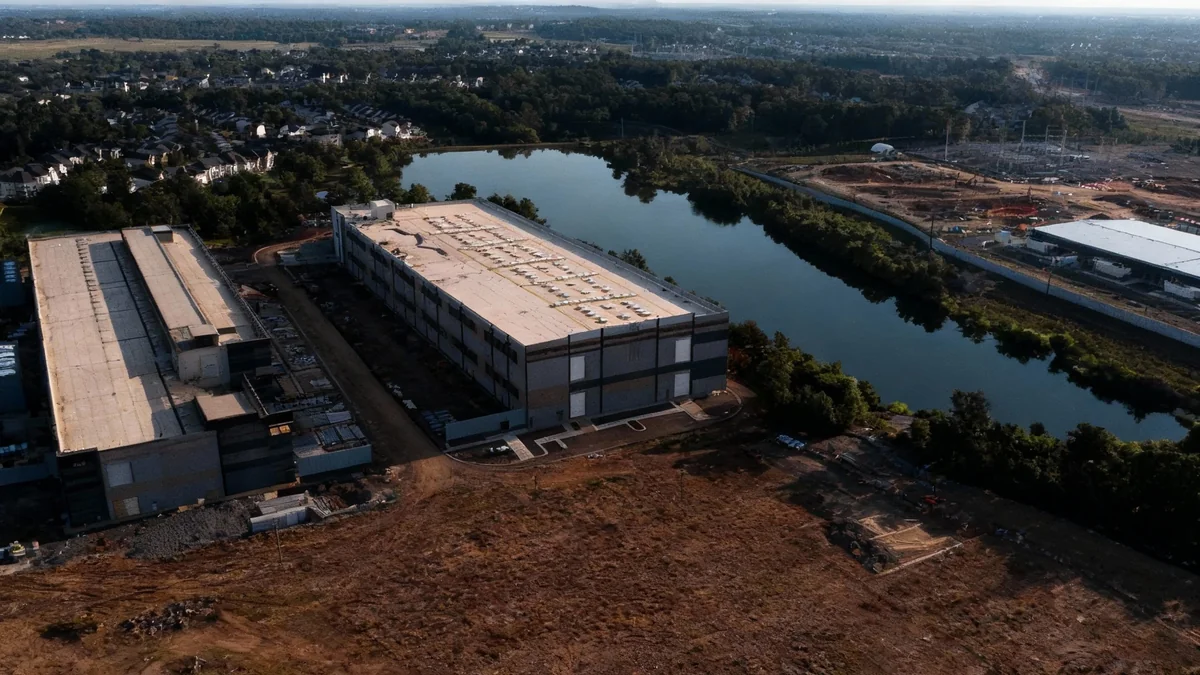Amazon Web Services (AWS), a dominant force in cloud computing, recently experienced significant service disruptions. This incident, which lasted for 15 hours, impacted numerous companies and consumer applications, raising concerns about the stability of critical cloud infrastructure.
The outage primarily affected a crucial cluster of data centers in Stone Ridge, Virginia. This event highlights the growing reliance on cloud services and the far-reaching consequences when these systems encounter problems.
Key Takeaways
- AWS suffered a 15-hour outage impacting hundreds of companies.
- The incident occurred in a primary data center cluster in Virginia.
- Disruptions affected trading platforms, digital education, and utility payments.
Cloud Infrastructure Stability Under Scrutiny
Amazon Web Services pioneered the cloud business model, transforming how businesses manage their data and applications. By offering pay-as-you-go services, AWS enabled companies to scale their operations with remarkable speed and consistency, effectively disrupting traditional data center incumbents.
This recent outage, however, brings the reliability of these foundational services into sharp focus. The incident affected a wide array of services, from financial trading platforms to online educational resources for students. Even essential public utilities, such as online payment systems for Seattle, Amazon's home city, faced disruptions.
Fact Check
The recent AWS outage lasted for approximately 15 hours, significantly longer than typical service interruptions. This duration underscores the complexity involved in restoring services within such a vast infrastructure.
Impact on Businesses and Daily Life
The ripple effect of the AWS outage was immediate and widespread. Companies relying on AWS for their core operations experienced significant downtime, leading to potential financial losses and operational challenges. For consumers, the inability to access essential apps and services created frustration and inconvenience.
Digital curriculums, for example, became inaccessible, disrupting learning for students. Online utility payments were halted, affecting residents in Seattle. These examples demonstrate how deeply integrated AWS has become into both corporate infrastructure and everyday consumer activities.
"The recent AWS service disruption serves as a stark reminder of our collective dependence on robust cloud infrastructure. Even the most established providers can face unforeseen challenges that impact millions."
The Virginia Data Center Cluster
The specific data center cluster in Stone Ridge, Virginia, is known as one of AWS's most critical operational hubs. This region hosts a substantial portion of the company's cloud infrastructure, making any disruption there particularly impactful. The concentration of services in such key locations makes them vulnerable to single points of failure, despite extensive redundancy measures.
Engineers worked tirelessly for over half a day to bring all affected services back online. The scale of the task reflects the intricate web of interdependencies within a global cloud network. Restoring functionality involves addressing issues across multiple layers of hardware and software.
Cloud Computing Explained
Cloud computing allows businesses to store and access data and programs over the internet instead of directly on their own servers. Services like AWS provide virtual servers, storage, databases, networking, analytics, and machine learning, enabling companies to avoid the costs and complexities of owning and maintaining their own IT infrastructure.
Looking Ahead: Resilience and Redundancy
This incident will likely prompt a deeper examination of cloud resilience strategies. While cloud providers implement multiple layers of redundancy and disaster recovery protocols, events like this highlight the continuous need for improvement.
Companies that rely heavily on single cloud providers may also re-evaluate their multi-cloud strategies, aiming to distribute their workloads across different vendors to mitigate risks. The goal is to ensure business continuity even when one provider experiences an issue.
The Future of Cloud Reliability
As artificial intelligence and other advanced technologies become more reliant on vast computing resources, the stability of cloud platforms like AWS becomes even more critical. The industry continues to invest heavily in improving uptime and reducing the likelihood of such outages.
However, the sheer scale and complexity of these global networks mean that occasional incidents are almost inevitable. The focus for both providers and users will remain on building more resilient systems and developing faster, more effective recovery mechanisms to minimize disruption.
- Evaluate current cloud dependency.
- Diversify cloud service providers where feasible.
- Implement robust disaster recovery plans.
- Monitor cloud service status updates closely.
The recent outage serves as a critical learning experience for the entire cloud computing ecosystem. It reinforces the importance of continuous innovation in reliability and the need for businesses to have robust contingency plans in place.





